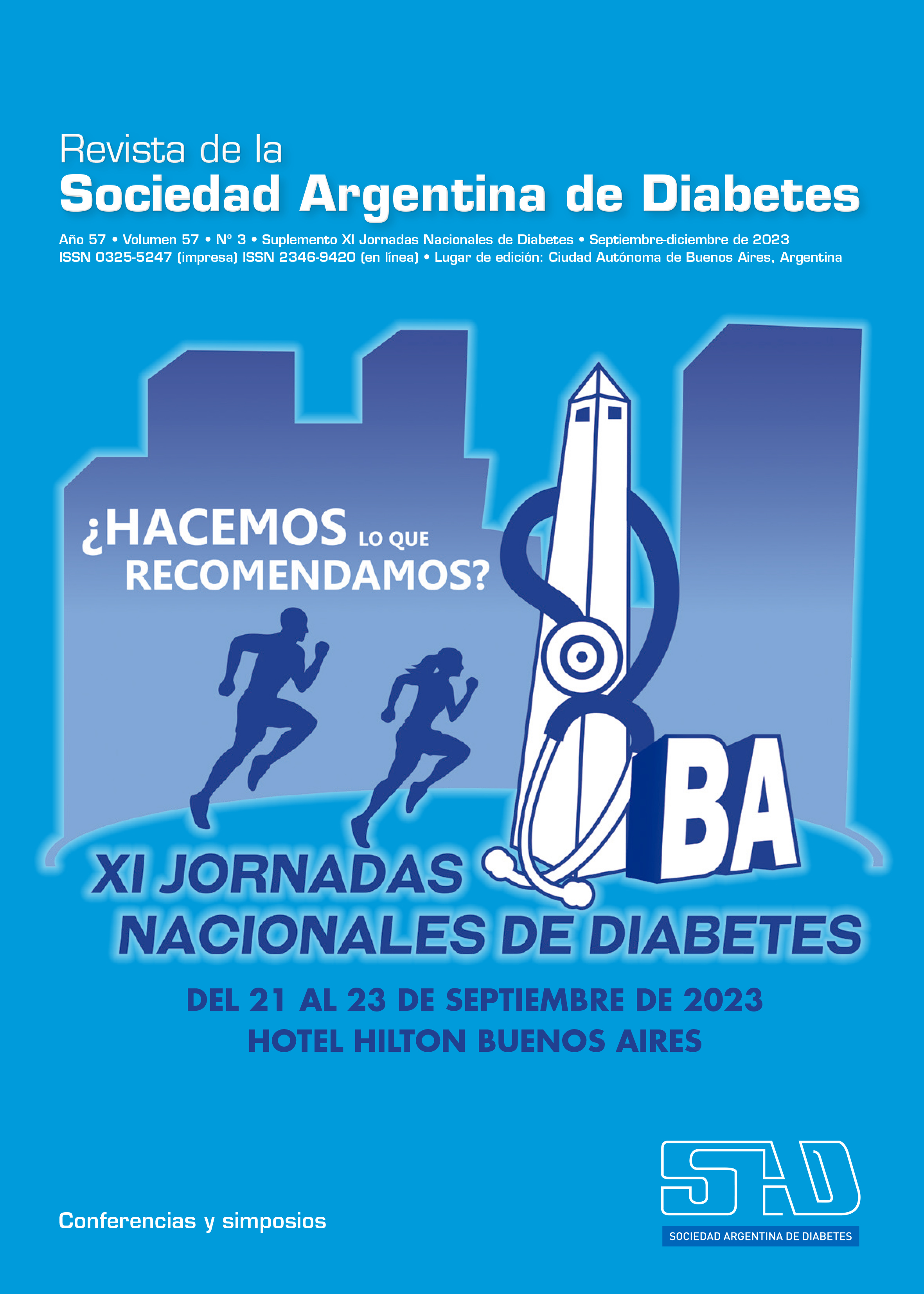Macrovascular disease and prediabetes: what is the goal of risk factors?
DOI:
https://doi.org/10.47196/diab.v57i3Sup.666Keywords:
macrovascular disease, prediabetesAbstract
Prediabetes is defined by a fasting plasma glucose (FPG) level of 100 to 125 mg/dL, a postprandial glucose level (PPG) of 140 to 199 mg/dL measured 2 hours after an oral glucose load of 75 g, or an A1C level of 5.7% to 6.4%.
10% of people with prediabetes progress to diabetes mellitus (DM) each year, and prediabetes is associated with cardiovascular events and mortality. On the other hand, prediabetes is highly prevalent in patients with macrovascular disease.
An intensive lifestyle change program, with self-management education and motivational support, reduced the incidence of DM by 62% at 3 years, while metformin decreased the risk by 32%.
Metformin is most effective for women with prior gestational DM and for >60 years with a body mass index (BMI) ≥35, FPG ≥110 mg/dL, or HbA1C ≥6%.
The risk of cardiovascular disease increases mainly due to its relationship with other risk factors that make up the metabolic syndrome, such as obesity, dyslipidemia and arterial hypertension. Another point related to the development of cardiovascular disease (CVD) in prediabetes is the increase in lipoprotein (Lp)a levels.
Among the therapeutic objectives are:
- Incorporation into an intensive lifestyle change program to achieve a 7% weight loss and physical activity >150 minutes/week.
- Prescribe a Mediterranean diet since it reduces cardiovascular events, incident DM2 and improves endothelial function.
- Cessation of smoking, even passive, to reduce the risk of DM, CVD and premature death.
- Target blood pressure (BP) individualized to the CV risk profile, coexisting clinical conditions, adverse drug effects, and tolerance to treatment. If BP >140/90 mm Hg, start antihypertensive medication. A systolic BP >120 and <130 mm Hg in the youngest and in secondary prevention, and >130 and <140 mm Hg in >65 years and in primary prevention.
- LDL-C goal <100 mg/dl with moderate risk, <70 mg/dl with high risk, and <55 mg/dl and/or reduction ≥50% with very high risk.
- Aspirin if the risk is high and very high in the absence of contraindications.
- Prolonged double antiplatelet therapy after acute coronary syndrome and/or in the presence of peripheral arterial disease.
- Measure FPG and A1C for screening and an oral glucose tolerance test if inconclusive.
References
I. ElSayed NA, Aleppo G, Aroda VR, et al; on behalf of the American Diabetes Association. Classification and diagnosis of diabetes: standards of care in diabetes-2023. Diabetes Care 2023;46(suppl 1):S19-S40. doi:10.2337/dc23-S002.
II. Cai X, Zhang Y, LiM, et al. Association between prediabetes and risk of all-cause mortality and cardiovascular disease: updated meta-analysis. BMJ 2020;370:m2297. doi:10.1136/bmj.m2297.
III. Diabetes Prevention Program Research Group. Long-term effects of metformin on diabetes prevention: identification of subgroups that benefited Most in the diabetes prevention program and diabetes prevention program outcomes study. Diabetes Care 2019;42(4):601-608.https://doi.org/10.2337/dc18-1970.
IV. Visseren FLJ, Mach F, Smulders YM, et al. 2021 ESC Guidelines on cardiovascular disease prevention in clinical practice. Eur Heart J 2021;42(34):3227:3337. doi:101093/eurheartj/ehab484.
Downloads
Published
Issue
Section
License
Copyright (c) 2023 on behalf of the authors. Reproduction rights: Argentine Diabetes Society

This work is licensed under a Creative Commons Attribution-NonCommercial-NoDerivatives 4.0 International License.
Dirección Nacional de Derecho de Autor, Exp. N° 5.333.129. Instituto Nacional de la Propiedad Industrial, Marca «Revista de la Sociedad Argentina de Diabetes - Asociación Civil» N° de concesión 2.605.405 y N° de disposición 1.404/13.
La Revista de la SAD está licenciada bajo Licencia Creative Commons Atribución – No Comercial – Sin Obra Derivada 4.0 Internacional.
Por otra parte, la Revista SAD permite que los autores mantengan los derechos de autor sin restricciones.




























